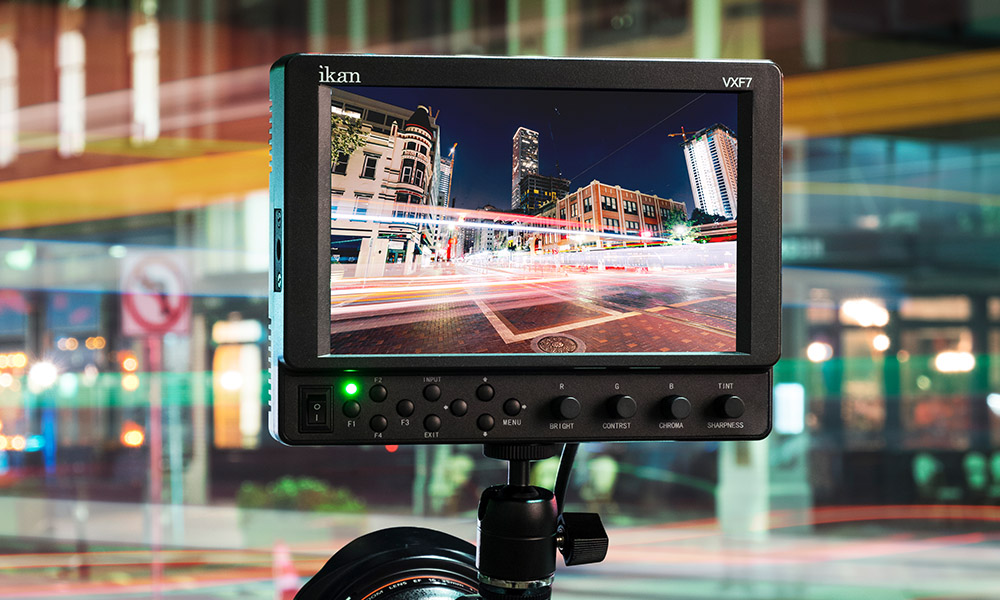
Professional video cameras have built-in monitors, giving the operators a small window showing what they’re shooting. Of course, making sure your production looks as clear and professional as possible is crucial. Thankfully, external on-camera monitors exist, but what exactly makes these screens better? Take a look at the guide below to learn why LCD field monitors are better than on-camera monitors for shooting professional content.
Screen Size
Built-in screens on video cameras show you what’s in front of the lens. However, due to the minimal size of the built-in screen, professional video productions rely on larger options on set. Furthermore, though still technically an on-camera monitor, LCD field monitors showcase a much larger screen than built-in monitors. For example, our professional field monitors at Ikan carry screen sizes such as 5.6” and 7”, whichever best suits your production needs. However, screen size goes hand in hand with another crucial factor, which is image resolution.
Image Resolution
Arguably the biggest reason why LCD field monitors are better than on-camera monitors is the resolution. More specifically, the benefit of a great external monitor is having a larger screen with high-quality resolution. For instance, within our library of camera field monitors is the VXF7-V2, which has a 1920 x 1200 IPS LCD panel and offers 4K support via HDMI. That way, the monitor can provide you with a rich, vibrant image that makes it much easier to spot small details.
Comprehensive View
Speaking of spotting small details, such a comprehensive view is certainly a significant benefit of LCD monitors. The ability to see what you’re shooting on a larger screen with high resolution makes it easier to catch any mistakes in the image. For example, maybe the footage is out of focus, or the lighting isn’t quite right. Whatever the issue, you can spot it quickly on the right monitor. In doing so, you can avoid creating unprofessional, low-quality content for your audience.
